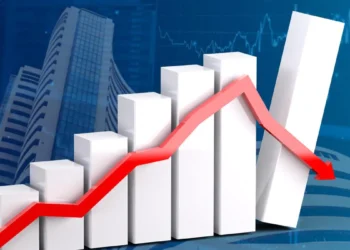The latest figures on UK inflation have been released, revealing that consumer prices rose by an annual 8.7% in May, remaining unchanged from the previous month. The data exceeded economists’ expectations, as a Reuters poll projected a rise of 8.4%. These numbers shed light on the persistent challenge of high inflation in the country and its potential impact on the economy, consumers, and monetary policy decisions.
Sticky Inflation and Tight Labor Market:
The core inflation rate, which excludes volatile energy, food, alcohol, and tobacco prices, saw an annual increase of 7.1% in May, up from 6.8% in April. This marks the highest rate since March 1992. Rising prices in air travel, recreational and cultural goods and services, and second-hand cars contributed significantly to the monthly change in both the Consumer Prices Index (CPI) and the Consumer Prices Index including owner occupiers’ housing costs (CPIH).
Implications for Monetary Policy:
The Bank of England is set to announce its next monetary policy decision, and it is widely expected that the central bank will implement its 13th consecutive interest rate hike. Balancing the need to control inflation without triggering a mortgage crisis and recession poses a challenging task. Sticky inflation and a tight labor market have led economists to revise their forecasts for peak interest rates, suggesting that the cycle of monetary policy tightening may last longer than previously anticipated.
Cost of Living Crisis and Government Response:
The persistence of the UK’s cost of living crisis, with the country’s CPI ranking as the highest among G7 nations, presents a significant challenge for the government. Prime Minister Rishi Sunak had promised to halve inflation by the end of the year, ahead of the upcoming general election in 2024. Finance Minister Jeremy Hunt affirmed the government’s commitment to supporting the Bank of England in tackling inflation while providing targeted assistance to manage the cost of living.
Concerns for Consumers and Investors:
The high inflation rate poses concerns for consumers, investors, and the government alike. Marcus Brookes, Chief Investment Officer at Quilter Investors, described the latest inflation figures as a “bitter pill to swallow.” He emphasized the unique set of circumstances affecting the UK economy, with inflation driven more by supply issues than demand. Brookes expressed concerns about the potential mortgage crisis as interest rates rise further, impacting households’ financial stability.
Challenges Ahead and Potential Solutions:
Economists believe that the fight against inflation is far from over, especially considering the surging prices of food and non-alcoholic beverages. Suren Thiru, Economics Director at ICAEW, emphasized that although the trajectory of UK inflation over the summer is largely determined, lower gas and electricity bills from July may lead to notable declines in the headline rate. However, the squeeze on consumer spending due to escalating mortgage costs and higher taxes could still present challenges.
Bottom line:
The UK’s inflation rate remained stubbornly high at 8.7% in May, surpassing expectations and indicating ongoing challenges for the economy and consumers. The Bank of England faces the delicate task of managing inflation while avoiding potential pitfalls such as a mortgage crisis and recession. The government’s commitment to addressing the cost of living crisis and supporting the central bank’s efforts is crucial. As the summer unfolds, the impact of lower energy bills may provide some relief, but the challenges posed by core inflation and its consequences on consumer spending remain significant concerns.










